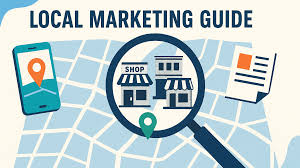Essential UX Design Principles for Modern E-commerce Platforms

In today’s world, online shopping is very popular. Many people buy things from e-commerce platforms. To make these platforms better, we need to focus on user experience or UX. Good UX design helps customers find what they want easily and enjoy their shopping.
This blog will share some important UX design principles for modern e-commerce development platforms. By improving these principles, businesses can create more engaging and effective online shopping experiences.
Creating a Simple Layout
One of the first things to think about is the layout of the website. A simple layout helps users navigate the site without getting lost. When customers can find what they need quickly, they are more likely to buy something.
Use clear categories and labels to guide users. This makes it easier for them to explore different products. A clean and organized layout also improves the overall visual appeal, making the shopping experience more enjoyable.
Using Clear Navigation
Navigation is how users move around the website. It should be easy and straightforward. A good navigation menu helps users find products without confusion.
Make sure the menu is visible and organized. Use drop-down menus for subcategories to keep things tidy. This way, users can quickly jump to the section they want.
Additionally, consider adding a search bar so users can directly find specific items further enhancing the overall user experience.
Optimizing for Mobile Devices
Many people shop using their phones or tablets. Therefore, it is important to design e-commerce platforms that work well on mobile devices. A responsive design adjusts to different screen sizes.
This means users can have a good experience whether they are on a computer or a phone. Make sure buttons are big enough to tap easily and the text is readable. Optimizing the mobile experience will encourage more users to complete their purchases on the go
Using High-Quality Images
Images play a big role in online shopping. Customers cannot touch or try products, so good images help them make decisions. Use high-quality photos that show products from different angles.
This gives users a better idea of what they are buying. Adding zoom features can also help customers see details clearly. Additionally, including videos or 360-degree views can further enhance their understanding of the product.
Providing Clear Product Information
When customers look at a product, they want to know everything about it. This includes price, size, color, and features. Providing clear and detailed product information helps users feel confident in their choices.
Avoid using complicated words. Instead, use simple language that everyone can understand.
Make the Checkout Process Easy
The checkout process is a crucial part of online shopping. If it is too complicated, customers may abandon their carts. Keep the checkout process simple and quick.
Allow users to check out as guests without creating an account. This can help reduce the number of steps needed to complete a purchase.
Encouraging Customer Feedback
Listening to customers is important for improving UX design. Encourage users to leave feedback about their shopping experience. This can help you understand what works and what needs improvement.
Use surveys or reviews to gather this information. Making changes based on feedback shows customers that you care about their experience.
Making UX a Priority for E-commerce Success
Good UX design is essential for modern e-commerce platforms. By focusing on simple layouts, clear navigation, and high-quality images, you can create a better shopping experience. Remember to make the checkout process easy and listen to customer feedback.
These principles can help boost conversions and make your platform successful. Did you like this guide? Great! Browse our website for more!



